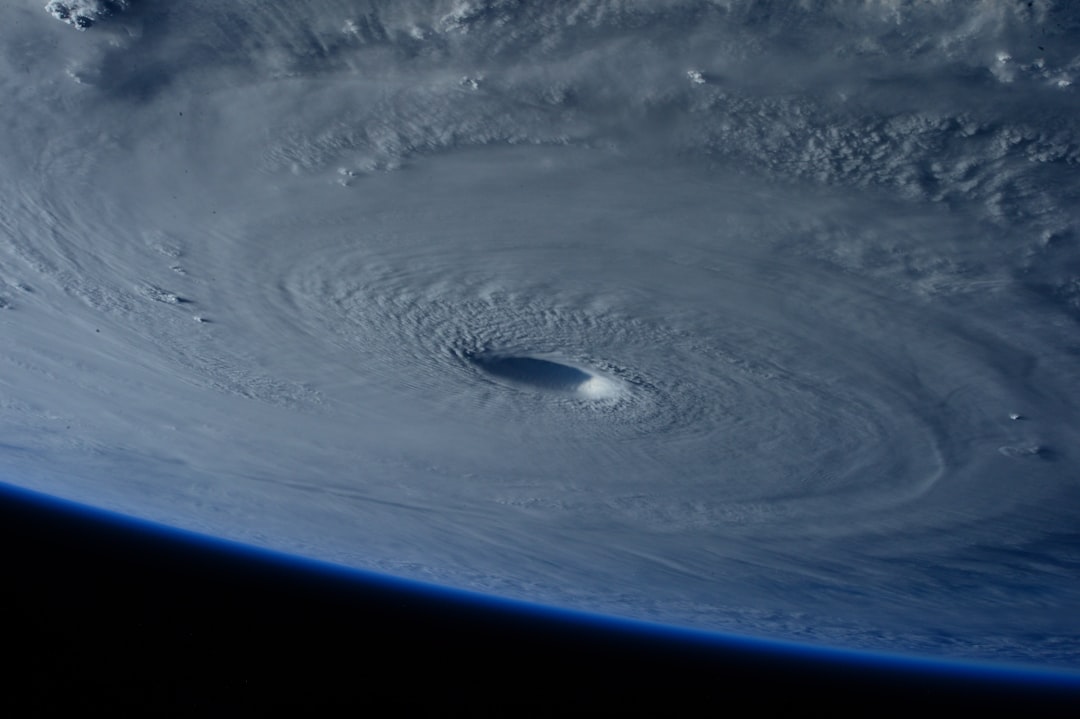Preparing your roof for Miami-Dade’s hurricane season is a critical task for homeowners and business owners alike. This comprehensive article dives deep into the essential steps to fortify your roof against the fierce winds and relentless rains characteristic of South Florida’s hurricane threats. From professional inspections to securing shingles, understanding insurance coverage, and exploring state-of-the-art materials from manufacturers like GAF, Owens Corning, and CertainTeed, we provide actionable guidance to protect your property. The insights shared here reflect the heightened risks and preventative strategies relevant to 2025, ensuring resilience and peace of mind in the face of unpredictable storms.
Preparing Your Roof for Miami-Dade’s Hurricane Season
Miami-Dade County, known for its beautiful beaches and tropical climate, is also synonymous with hurricane season, which spans from June 1 to November 30 each year. These months bring significant risks, as hurricanes can unleash powerful winds and torrential rainstorms, posing threats to property and safety. Your roof serves as the first line of defense, making its preparation essential for minimizing damage and maintaining the structural integrity of your home or business.
As we approach the 2025 hurricane season, understanding the most effective preparation methods is vital. This involves a thorough inspection process, timely repairs, and upgrading roof components to meet the latest building codes and standards. Leveraging advanced roofing materials from industry leaders—including IKO, TAMKO, Firestone Building Products, and Polyglass—can significantly enhance resistance against hurricanes. Whether you own a residence or commercial space, early and informed preparation will save considerable time, stress, and financial expense in the aftermath of a storm. This article will explore detailed strategies, including practical tips, technological innovations, and insurance considerations to help you ready your roof for the upcoming hurricane season.

Comprehensive Roof Inspection: The First Step in Hurricane Preparation
Starting your hurricane season readiness with a detailed roof inspection is indispensable. Licensed contractors, such as TS Painting Pro and partners, provide expert evaluations that identify vulnerabilities early. In Miami-Dade, where tropical storms can intensify rapidly, detecting and remedying potential weak spots prevents devastating damage during hurricanes.
Key Inspection Components
- Shingles and tiles check: Contractors inspect for missing, loose, or cracked shingles that can easily dislodge in high winds.
- Roof decking stability: Soft or rotting decking is a critical hazard, as it undermines the roof’s structural integrity.
- Flashing and penetrations: Vulnerabilities around chimneys, skylights, vents, and gutters can lead to water intrusion.
- Gutter and downspout condition: Ensuring materials are clear and functional to direct water flow away from the foundation.
Striking agreements with companies like WeatherGuard or DuPont Tyvek ensures that inspections include evaluation of how well weather barriers and underlayment systems are performing. These advanced materials contribute to moisture resistance and structural durability.
Example: The Impact of Early Detection
Consider a homeowner in Palm Beach who, in early spring 2025, discovered several loose shingles and minor cracks in the flashing during a professional roof inspection. Addressing these defects before the hurricane season prevented a costly roof replacement after a Category 4 storm caused widespread damage throughout the region. Early intervention saved both time and money and offered peace of mind to the household.
| Inspection Area | Potential Issue | Preventative Action |
|---|---|---|
| Shingles | Loose, missing, or broken shingles | Refasten or replace damaged shingles using hurricane-rated nails |
| Roof Decking | Soft spots or rotting wood | Replace damaged decking to reinforce support |
| Flashing | Cracks or improperly sealed areas | Reseal or replace to prevent water entry |
| Gutters | Clogs and poor drainage | Clear debris and repair damaged sections |
Regular roof inspection aligns with preventative roof maintenance practices recommended by TS Painting Pro. Many homeowners underestimate the impact of these routine checks that directly reduce vulnerability to hurricane-related damage.
Securing or Replacing Loose Shingles and Tiles to Withstand Hurricanes
Loose or damaged roofing materials present significant hazards during tropical storms. Winds in hurricane-force conditions can easily lift and strip shingles or tiles, creating openings for water intrusion and transforming debris into dangerous projectiles. Thus, securing or replacing these components is vital.
Best Practices for Fastening Roofing Materials
- Use hurricane-rated nails and adhesives: Products certified for hurricane resistance enhance the bond and prevent displacement.
- Replace missing or damaged shingles with high-quality brands: Roofing materials from GAF, Owens Corning, or Atlas Roofing bring proven durability and strong resistance against wind uplift.
- Professional installation: Employ certified contractors with experience in hurricane-prone regions to ensure proper installation techniques.
In Florida, local building codes often require specific ratings for roofing materials, such as those that meet ASTM standards for wind resistance. For example, certain shingles from TAMKO are rated for winds exceeding 130 mph, providing superior protection for Miami-Dade homes facing increasingly severe storms.
Case Study: Impact of Quality Roofing Material
A commercial property owner in Miami replaced outdated shingles with CertainTeed’s hurricane-resistant shingles just before the 2025 hurricane season. After a major storm with sustained winds near 120 mph, the roof remained intact with no reported leaks. This installation reduced repair costs substantially compared to neighboring businesses.
| Brand | Wind Resistance Rating | Material Type | Typical Warranty |
|---|---|---|---|
| GAF Timberline HDZ | Up to 130 mph | Asphalt Shingles | 50 years |
| CertainTeed Landmark | Up to 130 mph | Architectural Shingles | 50 years |
| Owens Corning Duration | Up to 110 mph | Fiberglass Shingles | Limited Lifetime |
| TAMKO Heritage | Up to 130 mph | Asphalt Shingles | Limited Lifetime |
Homeowners looking for guidance on installation and maintenance tips can visit the TS Painting Pro resource pages such as reliable interior painting services and preventative roof maintenance to complement physical roof preparations with ongoing care strategies.

Effective Gutter and Downspout Management to Prevent Roof Water Damage
Miami-Dade hurricanes bring torrential rains that overwhelm gutters and downspouts, causing water to back up and seep beneath roofing materials. Proper maintenance of these drainage systems prevents foundation issues and water intrusion into attic spaces.
Steps for Gutter and Downspout Preparation
- Clear all leaves, branches, and debris: Regular cleaning before hurricane season ensures unobstructed water flow.
- Inspect for damage and leaks: Repair holes or joints to maintain system integrity.
- Extend downspouts away from foundation: Use extensions or splash blocks to direct water flow.
- Consider installing gutter guards: Reduce future debris accumulation and maintenance needs.
Professionals recommend periodically inspecting gutters after heavy storms and during seasonal transitions. Many Miami homeowners have experienced basement flooding or interior water damage due to neglected gutters clogged with tropical leaves or pine needles.
Illustration of Consequences of Neglected Gutters
In 2024, a Miami resident faced costly repairs after ignoring gutter maintenance. Excess water seeped into their attic through compromised flashing, triggering mold growth and structural decay. Had routine gutter cleaning and inspection from a company like TS Painting Pro been performed, these damages would likely have been prevented.
| Gutter Issue | Possible Consequence | Preventative Measure |
|---|---|---|
| Clogged Gutters | Water overflow causing roof leaks | Regular cleaning and debris removal |
| Damaged Downspouts | Water pooling near foundation | Repair and extend away from house |
| Leaky Joints | Water infiltration under roofing layers | Seal and replace damaged segments |
Tree Maintenance and Vegetation Management for Hurricane Roof Safety
Tree branches and vegetation near a roof pose significant hazards during hurricanes. Branches can break and slam onto roofs, resulting in punctures, torn shingles, and even structural breaches. Maintaining the trees around a property not only protects your roof but also safeguards neighboring homes.
Essential Tree Care Strategies
- Trim overhanging and weak branches: Proactively prune limbs that are close to or over the roof area.
- Remove dead or diseased trees: Trees weakened by disease or decay are prone to fall during high winds.
- Regularly inspect trees for signs of instability: Root rot or trunk cracks require professional evaluation.
- Plan for professional arborist consultations: Qualified arborists can recommend tree removals or treatments.
With Miami-Dade’s lush tropical climate, tree care in preparation for hurricane season is critical. In 2023, TS Painting Pro helped a homeowner after a major storm where a nearby oak limb fell on the roof, causing extensive damage that could have been prevented with routine tree maintenance.
| Tree Issue | Risk for Roof | Recommended Action |
|---|---|---|
| Overhanging branches | Physical damage to shingles and tiles | Seasonal trimming |
| Dead trees | Falling hazards | Removal and replacement |
| Diseased/decaying trees | Structural instability | Professional assessment and treatment |
Installing Hurricane Straps and Clips to Strengthen Roof Attachment
Homes built before Florida’s 2001 updated building codes may lack essential hurricane straps and clips that provide improved resistance to wind uplift. These metal connectors attach the roof structure securely to the walls, reducing the risk of the roof being torn off in severe winds.
Benefits of Hurricane Straps
- Enhanced structural integrity: Distributes wind forces more evenly across roof and frame.
- Insurance incentives: Some insurers offer discounts for homes equipped with approved hurricane straps.
- Compliance with updated building codes: Meets or exceeds Miami-Dade requirements for new constructions and renovations.
TS Painting Pro offers assessments and installations for hurricane straps, leveraging top-quality fasteners and connectors. Homeowners may also qualify for state grants or rebate programs when upgrading their properties.
Understanding and Reviewing Insurance Policies for Hurricane Coverage
Insurance preparedness complements physical roof strengthening efforts. Reviewing your homeowner’s policy for hurricane coverage ensures you understand your deductible, the extent of coverage, and necessary documentation should disaster strike.
Insurance Preparation Checklist
- Verify hurricane deductible details: These deductibles are higher than standard ones and vary per policy.
- Document roof condition: Take high-resolution photos pre-season and after inspections.
- Store insurance documents securely: Maintain both physical and digital copies in accessible locations.
- Contact your insurer for clarifications: Discuss potential policy upgrades or endorsements for hurricane protection.
Having a clear understanding of your insurance policy avoids confusion and delays during claims after a hurricane. It also motivates timely roof repairs and maintenance to meet claim eligibility criteria.
Planning for Emergency Roof Repair and Tarping Services
Despite the best preparations, roofs might sustain damage during major storms. Rapid emergency response through professional tarping limits further water damage and structural issues while waiting for permanent repairs.
Key Elements of Emergency Preparedness
- Create a list of trusted contacts: Service providers specializing in emergency tarping and roofing repairs, such as TS Painting Pro.
- Have tarping materials ready: Contractors often keep tarps and supplies for quick deployment after a storm.
- Understand insurance claim support: Know that insurance often covers temporary repairs.
- Coordinate with neighbors: Sharing information can enhance community resilience.
TS Painting Pro emphasizes the importance of a tarping plan as a critical component of hurricane season preparedness. Their emergency services team can be reached promptly should a roof sustain damage, helping homeowners minimize repair costs and interior damage.
Get Your Roof Hurricane-Ready with Expert Help from TS Painting Pro
Protect your Miami-Dade home or business from devastating hurricane damage by scheduling a professional roof inspection and maintenance with TS Painting Pro. Our expert team uses industry-leading materials from brands like GAF, Owens Corning, and TAMKO to fortify your roof against the stormy season ahead. Don’t wait for disaster to strike; ensure your roof’s durability today for peace of mind tomorrow.


